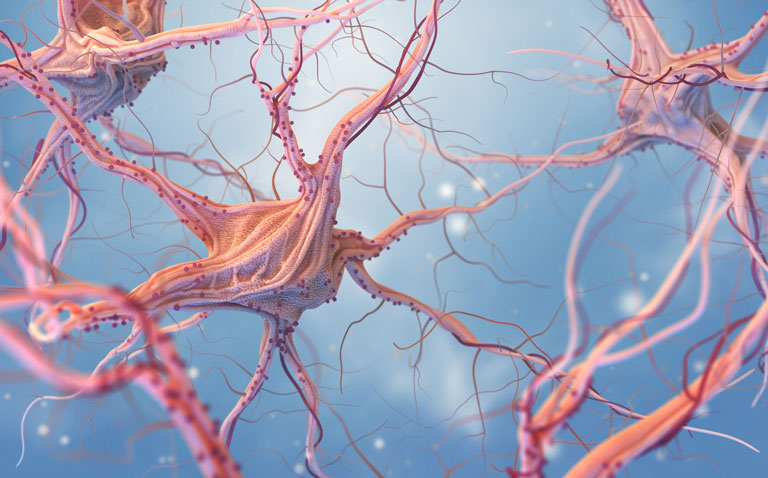The largest trial for more than 20 years into status epilepticus has shown that two unlicensed drugs (levetiracetam and valproate) are just as effective as the only current licensed drug for the condition (fosphenytoin/phenytoin).
The research, by scientists at leading institutions in the US and UK and supported by the National Institute of Neurological Disorders and Stroke, part of the National Institutes of Health, involved 384 patients who were treated for status epilepticus across 57 hospitals in the US. By randomly assigning patients to receive one of the three drugs, they found that each drug stopped the seizures in around half the patients, saving many from admission to intensive care and associated complications.
Status epilepticus is the name for any seizure that lasts a long time, or a series of seizures where the person doesn’t regain consciousness in between. It can occur in patients at any age. Only around half of status epilepticus cases are in people with a history of epilepsy, with other common causes including stroke, brain injury or infections.1 The condition can be life-threatening with around 15 in 100 cases resulting in death.2
The initial treatment for patients is the sedative drug, benzodiazepine. This works for up to 7 out of 10 patients if given promptly in adequate doses.3 However for those that don’t respond, the only licensed drug is phenytoin, or its pro-drug fosphenytoin. The researchers aimed to gather evidence on the efficacy and safety of fosphenytoin, as well as newer alternative drugs levetiracetam and valproate, as a second line treatment. Both are established treatments for epilepsy, but not licensed for use in status epilepticus.
The study results showed the drugs were equivalent in terms of effectiveness in stopping seizures. Similarly, there were no clear differences in terms of drug safety when comparing across outcomes including life-threatening hypotension, heart problems, seizure recurrence and death.
The number of life-threatening safety events recorded in the trial was low, without any clear difference between groups in terms of safety, and provides evidence that high doses of levetiracetam and valproate as used in the study are safe alternatives to phenytoin.
Professor Hannah Cock, co-author of the study from St George’s, University of London and St. George’s University Hospitals NHS Foundation Trust, said: “The sooner seizures can be ended, the better the outcome for patients. At St George’s we get convulsive status epilepticus patients at least once per week, and we want to treat them quickly with best practice care.
“Our results show that we now have two other options to give to patients who need urgent care, and should give doctors the confidence to use these other medicines.”
The researchers used a clinical trial design known as response adaptive randomisation to improve the study’s efficiency and maximise the chances of identifying the best treatment. The study used an algorithm to determine which drugs patients would receive based on accumulating trial data.
Jaideep Kapur, MB BS, PhD, professor at the University of Virginia and co-lead author of the study, said: “Using an innovative design for this clinical trial, we were able to answer this important question in a timely and cost-effective manner.
“In addition, this design lowered risk by reducing the chances that participants could have received what might have been determined to be the least effective treatment.”
The next steps for the research team will be to assess treatment options for patients with refractory status epilepticus, where patients show no response to the initial benzodiazepine treatment or follow up drugs.
The institutions involved are:
• University of Virginia
• Medical University of South Carolina
• Children’s National Medical Center, Washington, DC
• University of Michigan
• University of Minnesota
• University of California, San Francisco
• Albert Einstein College of Medicine, Montefiore Medical Center
• National Institutes of Health, Bethesda
• St. George’s, University of London
• St. George’s University Hospitals NHS Foundation Trust
• ConfluenceStat, Orlando
• University of Central Florida College of Medicine
Source: Kapur et al. “Randomized Trial of Three Anticonvulsant Medications for Status Epilepticus,” New England Journal of Medicine, November 28, 2019.
This study was supported by the NINDS (U01NS088034, U01NS088023, U01NS056975, U01NS059041, and U01NS073476)
References
1 Chin RFM, Neville BGR, Scott RC. A systematic review of the epidemiology of status epilepticus. European Journal Of Neurology 2004;11(12):800-10.
2 Neligan A, Noyce AJ, Gosavi TD, et al. Change in Mortality of Generalized Convulsive Status Epilepticus in High-Income Countries Over Time: A Systematic Review and Meta-analysis. Jama Neurology 2019;76(8):897-905. doi: 10.1001/jamaneurol.2019.1268
3 Silbergleit R, Durkalski V, Lowenstein D, et al. Intramuscular versus intravenous therapy for prehospital status epilepticus. New England Journal of Medicine 2012;366(7):591-600. doi: 10.1056/NEJMoa1107494 [published Online First: 2012/02/18]










